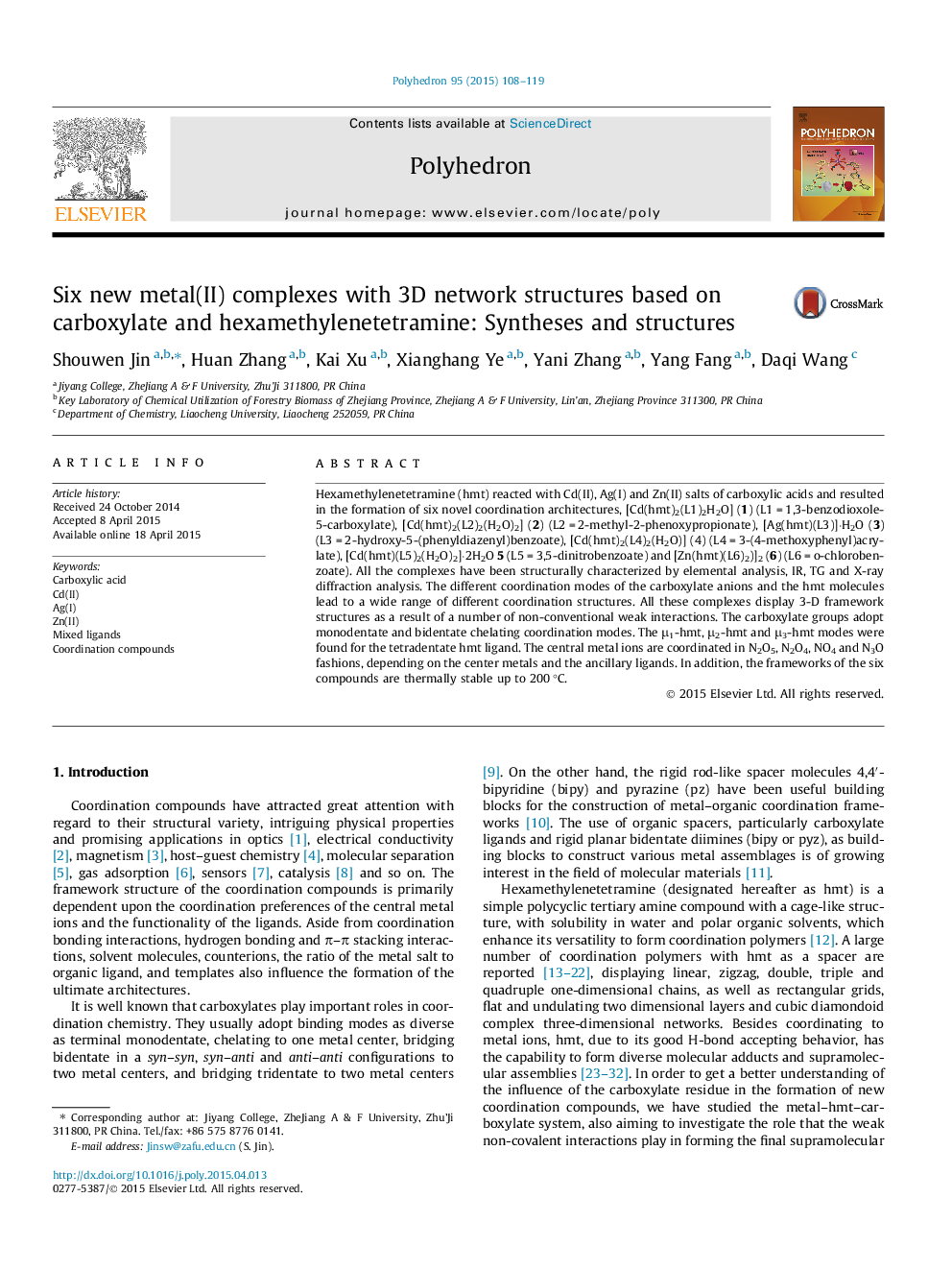| کد مقاله | کد نشریه | سال انتشار | مقاله انگلیسی | نسخه تمام متن |
|---|---|---|---|---|
| 1334382 | 1500244 | 2015 | 12 صفحه PDF | دانلود رایگان |

Hexamethylenetetramine (hmt) reacted with Cd(II), Ag(I) and Zn(II) salts of carboxylic acids and resulted in the formation of six novel coordination architectures, [Cd(hmt)2(L1)2H2O] (1) (L1 = 1,3-benzodioxole-5-carboxylate), [Cd(hmt)2(L2)2(H2O)2] (2) (L2 = 2-methyl-2-phenoxypropionate), [Ag(hmt)(L3)]·H2O (3) (L3 = 2-hydroxy-5-(phenyldiazenyl)benzoate), [Cd(hmt)2(L4)2(H2O)] (4) (L4 = 3-(4-methoxyphenyl)acrylate), [Cd(hmt)(L5)2(H2O)2]·2H2O 5 (L5 = 3,5-dinitrobenzoate) and [Zn(hmt)(L6)2)]2 (6) (L6 = o-chlorobenzoate). All the complexes have been structurally characterized by elemental analysis, IR, TG and X-ray diffraction analysis. The different coordination modes of the carboxylate anions and the hmt molecules lead to a wide range of different coordination structures. All these complexes display 3-D framework structures as a result of a number of non-conventional weak interactions. The carboxylate groups adopt monodentate and bidentate chelating coordination modes. The μ1-hmt, μ2-hmt and μ3-hmt modes were found for the tetradentate hmt ligand. The central metal ions are coordinated in N2O5, N2O4, NO4 and N3O fashions, depending on the center metals and the ancillary ligands. In addition, the frameworks of the six compounds are thermally stable up to 200 °C.
Due to weak non-covalent bonding interactions, the complexes display 3D structures.Six complexes with hmt and carboxylates were prepared and characterized by EA, IR spectra, TG and single crystal XRD analysis. These complexes display mononuclear, dinuclear and polymeric chain structures. The central metal ions adopt tetra- to hepta-coordination modes. The extensive non-bonding interactions in 1–6 are analysed.Figure optionsDownload as PowerPoint slide
Journal: Polyhedron - Volume 95, 27 July 2015, Pages 108–119